I have a collection view that holds cells with image views. I trigger an animation when the user presses down on the image view (using touchesBegan), and another animation for when the user releases (using touchesEnded).
The animations work perfectly only if I hold down on my click then release (delayed click), but when I fast click, the animation jumps as if the duration was set to 0.
I believe the issue is because collection view is subclass of scroll view, and scrollViews "temporarily intercepts a touch-down event by starting a timer and, before the timer fires, seeing if the touching finger makes any movement. If the timer fires without a significant change in position, the scroll view sends tracking events to the touched subview of the content view."
https://developer.apple.com/documentation/uikit/uiscrollview#//apple_ref/doc/uid/TP40006922
From what I can gather, I think that the touch interception from the collection view is causing problems with the animation if the click is faster than the touch timer. When I test using a regular view instead of a collection view as the superview, the animation works perfectly and doesn't require a delayed click.
If this is the case, then how is the animation triggered for a fast-click at all? Moreover, how might I be able to tigger the animation without having to use a delayed click?
If this is not the case, then what might be the reason for this issue?
Here is my code for animation and touches:
func animateClickerAndBallPoint(newXpositionForClicker: CGFloat, newXpositionForBallPoint: CGFloat, ballPoint: UIImageView) {
UIView.animate(withDuration: 0.1) {
self.frame.origin.x = newXpositionForClicker
ballPoint.frame.origin.x = newXpositionForBallPoint
}
}
override func touchesBegan(_ touches: Set<UITouch>, with event: UIEvent?) {
guard let ballPoint = self.ballPoint else {return}
self.animateClickerAndBallPoint(newXpositionForClicker: 288, newXpositionForBallPoint: 11, ballPoint: ballPoint)
}
override func touchesEnded(_ touches: Set<UITouch>, with event: UIEvent?) {
guard let ballPoint = self.ballPoint else {return}
if isInWritingMode == true {
animateClickerAndBallPoint(newXpositionForClicker: 306, newXpositionForBallPoint: 26, ballPoint: ballPoint)
isInWritingMode = false
} else {
animateClickerAndBallPoint(newXpositionForClicker: 297, newXpositionForBallPoint: 17, ballPoint: ballPoint)
isInWritingMode = true
}
}

